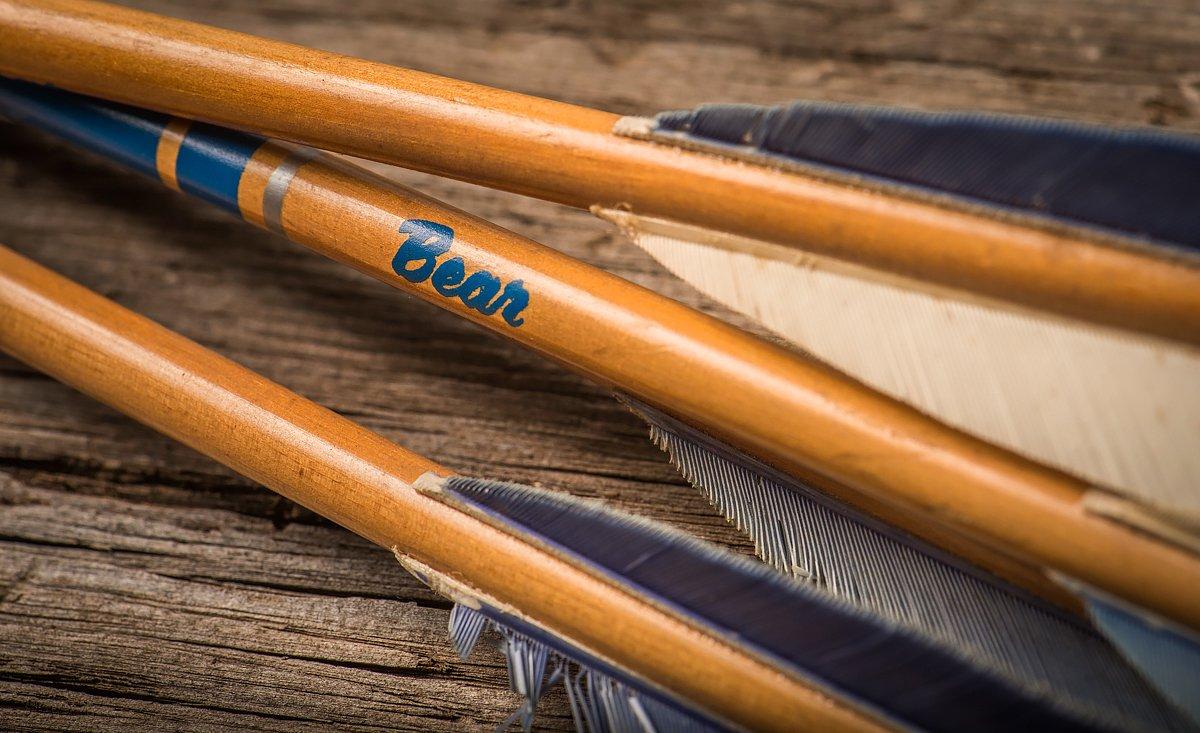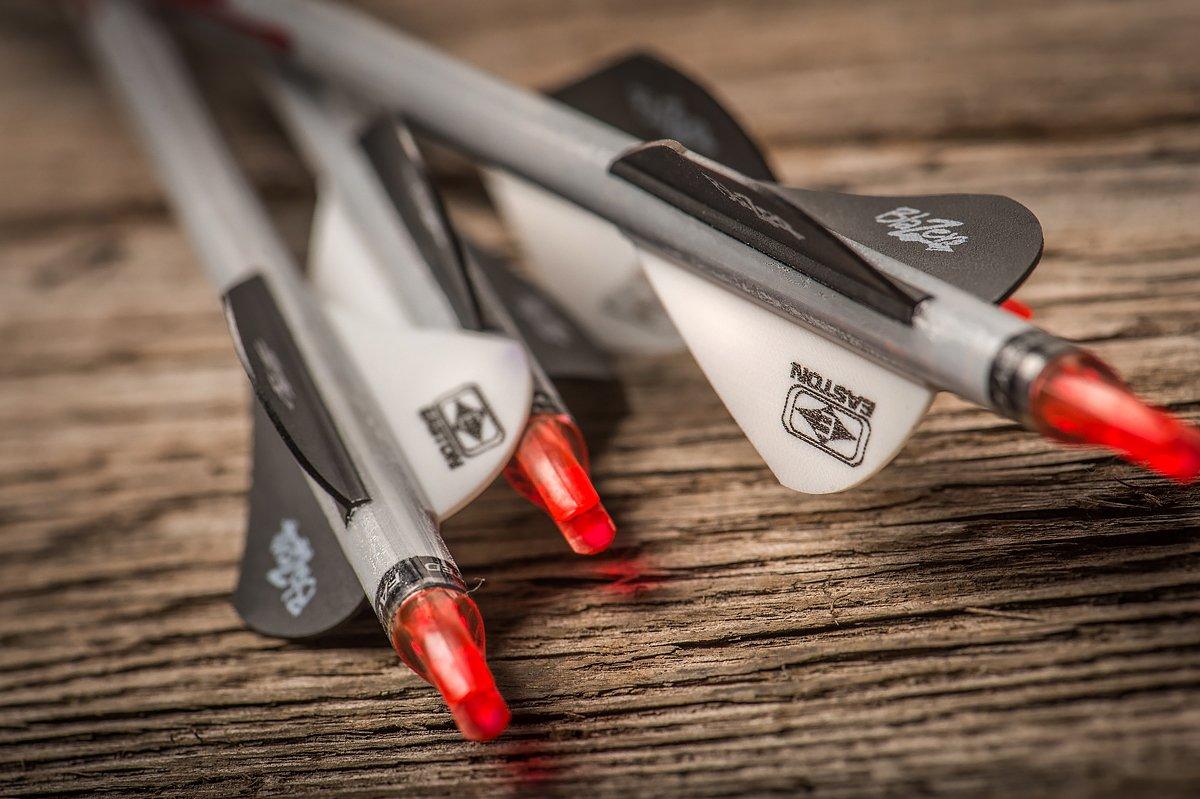Shoot Straight, Folks.
Building the Perfect Arrow
With a little patience, a few gadgets and an eye for detail, you too can build your own! -- By Tracy Breen
If you are willing to take the time to build your own arrows instead of buying them already built, you will end up with a superior arrow if you know what you're doing. When building your own arrows you will likely go above and beyond the call of duty and make sure the inserts and vanes as well as the nocks are glued in perfectly resulting in a better flying arrow. To build your perfect arrows you'll need some equipment to get the job done right. Below is a short list of must-haves along with a fairly simple how-to to get you started in the arrow-making business.
The Equipment list
1. Arrow cut-off saw.
2. Fletching jig
Cutting Arrows To Length
The first step is to cut your arrows to length with the cut off saw. Simply measure one of your old arrows and cut your new ones the same length. When purchasing a cut off saw, get one that has a dust collection system like the one Apple Archery Supply produces. This way, you will not have to worry about inhaling carbon dust.
Glue Inserts and Nocks
Gluing in inserts is an important step to arrow making. If you glue the inserts incorrectly you will end up with an arrow that wobbles. When gluing in the inserts, make sure you apply enough glue so they will stay put even when you pull an arrow with a broadhead attached out of a broadhead target. You need to wipe off any excess glue off the insert when you push it into the tip of the arrow and make sure the insert fits tightly inside the arrow. The same holds true when you are gluing in the nocks. Use enough glue and take your time to make sure it is straight and secure. This will provide you with flawless arrow flight.
Fletch Your Arrows

Know Your Broadhead
When you are building your arrow, try to decide beforehand what type of broadhead you want to shoot. By determining if you want an expandable, small 100 grain or large cut-on-contact 125 grain, you can build your arrow accordingly. Many hunters use a longer fletch or an extreme helical when using large heads. On the other hand, if you use an expandable, it will fly straight regardless of what type of fletching you use.
Cresting Arrows
Buying a cresting kit is not a necessity, but if you want your kids to get involved in the process, cresting an arrow will be by far the most enjoyable part of building an arrow. Bohnings' Cresting Kit comes with everything necessary to crest your arrow with a variety of colors. It is fun and can add visibility to your arrows so you know where your arrow is hitting an animal in the moment of truth.
Do A Spin Test
When your arrow is built and you think it is ready to fly, do one more thing before shooting it. Spin test it. You can spin test it in your hand by putting the tip of it on a table and spinning the arrow or you can purchase a spin tester.
Choose An Arrow Brand
There are a variety of arrow brands out there that fly great. Eliminating vibration is on the top of everyone's list these days. Most bows come with some type of gizmo or gadget to eliminate vibration from the bow. Some have built-in stabilizers in the arrow to help eliminate vibration in the arrow. It helps stabilize the arrow as it is shot from the bow and straightens out quicker after the shot, making it a more accurate arrow than most.
Picking The Right Broadhead
T-Bone's here to give straight, sharp and deadly advice on new broadhead selection. -- By Travis Turner
We don't have too much longer to wait now. I know bow season is near because folks are lining up in my archery shop to get their bows tuned and to stock up on new equipment. When selecting new equipment, you have a lot of important decisions to make including which broadhead to shoot.
Over the past eight or 10 years, expandable mechanical broadheads have become popular among hunters because of how easy they are to tune and because they maintain an accuracy that is very close to field points.
Broadhead Choices
Although expandable broadheads have a few positive qualities, I believe that the negatives outweigh the positives. For one, an expandable broadhead does not have near the penetration that a fixed-blade broadhead has, and the way an expandable broadhead folds over itself to open robs the arrow of kinetic energy. I advise people who pull only 40 to 45 pounds with their bows, such as seniors, kids and women, to stay away from expandables. In general I've seen more failures than successes by hunters who use expandable broadheads.
Although fixed-blade broadheads will not fly the same as your field points, they cut better and are more lethal than expandables. But if you index and tune your broadheads, they'll shoot just fine. It just takes a little more effort as well as practice.
Indexing your broadheads means adjusting each one so that it is a clone of the others. You want each broadhead aligned exactly the same with the arrow to maintain consistent aerodynamics when you shoot each one.
Arrow Tuning
To tune your arrow, you spin it to make sure that the point of the broadhead is in line with the center of the shaft. If it wobbles, then it's out of line and will dip and dive when you shoot it. The effort required to tune and index your broadheads makes shooting expandable broadheads appealing, but you just won't get the penetration you need.
Now, having said all of that, there are some new broadheads that are considered mechanicals but they're not expandable. They're aerodynamic featuring similar flight characteristics to a field point. They have exposed blades on the side and a cut-on-contact head, making quartering shots doable. When the broadhead hits the animal, it slides back into place. It does not have to fold over itself like the older expandable broadheads, so energy is not diminished. Even if it doesn't open when striking an animal, it will still penetrate the animal thanks to the exposed blades.
The New Fixed Heads
There are also some noteworthy advances with fixed-blade broadheads. Some companies have come out with broadheads that have shorter ferrules and shorter blade lengths which make them more aerodynamic thus more accurate.
They're small with a low profile and maintain 1- 1-1/8-inch cutting diameter. Best of all, they're much more aerodynamic than the older fixed-blade broadheads that want to plane out on you.
Before selecting any broadhead, I recommend going to pro shop and getting the experts there to help you. And regardless of what you choose, practice and take care of your equipment. If you practice with your broadheads, make sure they're sharp when you take them hunting. If they've become dull, you won't have the massive hemorrhaging needed to down a deer in proper fashion.
Click here for more bowhunting stories and how-to's.
Check us out on Facebook.








